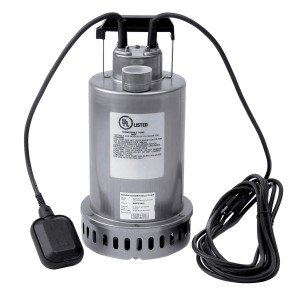 Honda may be synonymous with internal combustion engines, but their WSP53 Submersible Pump uses a 1/2 hp electric motor to keep basements, crawl spaces and other flood-prone areas dry. This guide will show you how to keep your pump working trouble-free and get it running again when problems do arise. Continue reading
Honda may be synonymous with internal combustion engines, but their WSP53 Submersible Pump uses a 1/2 hp electric motor to keep basements, crawl spaces and other flood-prone areas dry. This guide will show you how to keep your pump working trouble-free and get it running again when problems do arise. Continue reading
Tag Archives: Honda Lawn Parts
Honda WSP33 Submersible Pump Safety Guidelines
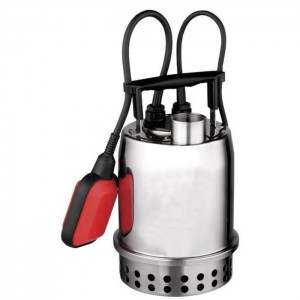 Honda’s WSP33 can control water levels in ponds and help keep basements dry, but the safety issues of such a device are obvious: it has a powerful motor, it’s constantly surrounded by water and it has household AC current being sent to it. Proper installation and use can all but eliminate the chance of fire and electrocution while providing reliable protection against flooding. Continue reading
Honda’s WSP33 can control water levels in ponds and help keep basements dry, but the safety issues of such a device are obvious: it has a powerful motor, it’s constantly surrounded by water and it has household AC current being sent to it. Proper installation and use can all but eliminate the chance of fire and electrocution while providing reliable protection against flooding. Continue reading
Storage and Transport Tips for a Honda WDP30 Diaphragm Pump
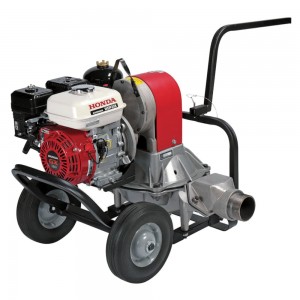 The Honda WDP30 diaphragm pump is designed to move water and debris under the harshest conditions, handling dry conditions, rocks and large solids with ease. Even with a design built for rough punishment, ensuring reliable service means knowing how to properly move and store it when it’s not in use. Continue reading
The Honda WDP30 diaphragm pump is designed to move water and debris under the harshest conditions, handling dry conditions, rocks and large solids with ease. Even with a design built for rough punishment, ensuring reliable service means knowing how to properly move and store it when it’s not in use. Continue reading
Honda WDP30 Troubleshooting Guide
 Honda’s water pumps are among the most durable and reliable pumps on the market, with a number of features that make them both easier to use and easier to maintain. Sometimes, however, even these top-of-the-line water pumps encounter a few operational problems that need to be fixed quickly. Troubleshooting is the best way for pump owners to figure out the exact cause of problems with the pump or its engine, especially during ignition or when beginning the water transfer process. By following a few troubleshooting guidelines at the first sign of a problem, equipment owners can prevent more serious damage and repairs, which might end up being quite costly if they aren’t caught early through one of these diagnostic procedures. Continue reading
Honda’s water pumps are among the most durable and reliable pumps on the market, with a number of features that make them both easier to use and easier to maintain. Sometimes, however, even these top-of-the-line water pumps encounter a few operational problems that need to be fixed quickly. Troubleshooting is the best way for pump owners to figure out the exact cause of problems with the pump or its engine, especially during ignition or when beginning the water transfer process. By following a few troubleshooting guidelines at the first sign of a problem, equipment owners can prevent more serious damage and repairs, which might end up being quite costly if they aren’t caught early through one of these diagnostic procedures. Continue reading
How to Service a Honda WDP30 Diaphragm Pump
 Whether it’s routine maintenance or a crucial repair, servicing the WDP30 diaphragm pump is a key part of ownership. Equipment owners should keep in mind that maintenance and repairs require the same strict adherence to safety guidelines as regular operation, however, and should therefore perform this work in an area with excellent ventilation, a lack of bystanders, and a flat, level surface that will make it easy to handle key parts and pieces of the pump as needed. With those considerations in mind, here’s what operators should know when pursuing water pump service. Continue reading
Whether it’s routine maintenance or a crucial repair, servicing the WDP30 diaphragm pump is a key part of ownership. Equipment owners should keep in mind that maintenance and repairs require the same strict adherence to safety guidelines as regular operation, however, and should therefore perform this work in an area with excellent ventilation, a lack of bystanders, and a flat, level surface that will make it easy to handle key parts and pieces of the pump as needed. With those considerations in mind, here’s what operators should know when pursuing water pump service. Continue reading
Honda WDP30 Diaphragm Pump Operation Guide
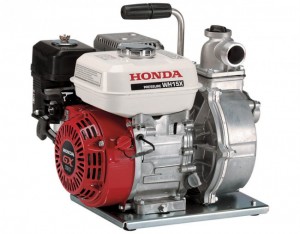 Pre-Operation Safety: A Crucial Part of the Process
Pre-Operation Safety: A Crucial Part of the Process
With any power equipment tool, safety should be a top concern prior to starting the engine and putting it into use. Before getting started with the Honda WDP30 diaphragm pump, make sure to read through the instruction manual and review the basic controls, features, and operational considerations that guide its use. In addition to reading through the instruction manual, check the pump for basic maintenance issues or damage that might have been sustained since it was last used. This includes checking fuel and oil levels, engine condition, hose condition, and the general condition of the pump’s exterior.
An Overview of Diaphragm Pump Operation
Operating a Honda diaphragm pump is actually pretty simple. Operating procedures can generally be broken down into preparation of the pump, priming the pump system, and then learning how to turn the engine on or off as needed. A brief overview of these topics can be found below.
Preparation of the Diaphragm Pump
The key to effectively using the diaphragm pump is to make sure that both of its hoses are functioning properly. If they aren’t, the pump will have a hard time with fluid intake, processing, or discharge, and this could cause maintenance issues in short order.
1. Suction Hose
Make sure that the suction hose being used is either the same size as, or slightly larger than, the suction hose opening on the WDP30 diaphragm pump. A hose that is too small will not be able to connect properly, and this could lead to leaks or other issues during operation. With the proper hose attached, ensure that the pump sits as close as possible to the pumping liquid and that the hose is free of sharp corners and kinks.
2. Discharge Hose
First and foremost, never use a discharge hose that is smaller in diameter than the actual pump output. Keep in mind that a suction hose with a diameter larger than the output will allow for faster discharge with less friction. A smaller hose will experience greater friction and will also reduce the overall amount of discharge. Choose the hose that provides the desired result within WDP30 pump specifications.
Priming the Pump
Priming the pump is an absolutely essential part of operation if the vertical distance from the water to the pump itself measures more than 16 feet. Without priming, the pump may very well sit idle even after the engine has been turned on. To prime the WDP30’s pump, remove the air cushion chamber cap and grasp the suction hose near the hose fitting. Lift the hose about one foot off the ground and then a gallon of water into the pump case via the air cushion chamber. Return the hose to the ground and reinstall the air cushion chamber cap. The fully primed pump will now function properly.
Starting and Stopping the Engine
Proper ignition is a key part of pump ownership, while safely turning the engine off is key to pump storage and long-term durability. To get the engine going, turn the fuel valve on and move the choke lever to its “closed” position. If the engine is still warm from previous use of the pump, operators can skip using the choke and move on to the next stage of engine ignition. Next, turn the ignition switch to the “on” position and move the throttle lever slightly toward the left.
With the throttle lever in place, give the starter grip a firm pull and repeat this process as needed until the engine turns on and stays on. With the engine operating, gradually move the choke lever into the “open” position. Finally, adjust the throttle lever to the appropriate engine speed so that liquid is processed at the appropriate pace. If necessary, throttle adjustments can be made throughout pumping so that the desired speed of discharge is achieved.
To turn the engine off in an emergency, quickly turn the ignition switch to the “off” position. Otherwise, there is a somewhat longer procedure to follow when stopping the engine and preparing the pump for storage. Begin by moving the throttle lever into the “idle” position and turning the ignition switch to the “off” position. Next, turn the fuel valve into its “off” position as well. Before storing the pump, drain the pump chamber and flush it with clean, clear water to remove any residual dirt and debris from the equipment.
Visit HondaLawnParts.com for OEM Diaphragm Pump Parts
HondaLawnParts.com is a great place to find a wide assortment of Honda WDP30 diaphragm pump parts. An online search tool allows operators to find parts according to their pump’s model number, the pump’s engine manufacturer, or the specific part number of the part that they require. This makes it easy to find a part that is perfectly compatible with the WDP30, making even a last-minute, emergency repair easier to perform.
Honda WT40X Troubleshooting Guide
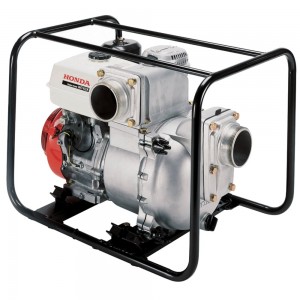 Even when backed by Honda’s legendary reliability and a strictly-followed maintenance schedule, problems can arise that can keep the WT40X from working correctly. Fortunately, many common problems are easy to fix. Continue reading
Even when backed by Honda’s legendary reliability and a strictly-followed maintenance schedule, problems can arise that can keep the WT40X from working correctly. Fortunately, many common problems are easy to fix. Continue reading
WT30X Honda Trash Pump Service Overview
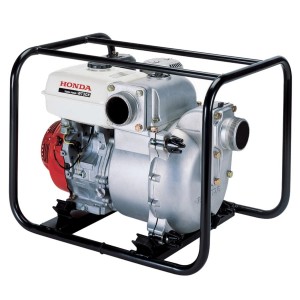 Have Honda’s WT30X trash pump and need to know what maintenance it needs? Here’s everything you need to know. Continue reading
Have Honda’s WT30X trash pump and need to know what maintenance it needs? Here’s everything you need to know. Continue reading
Maintenance Guide for a Honda WH15X
 Like any piece of small engine equipment, Honda’s WH15X water pump requires regular maintenance to provide optimum performance. This guide will help you keep your pump in tip top shape. Continue reading
Like any piece of small engine equipment, Honda’s WH15X water pump requires regular maintenance to provide optimum performance. This guide will help you keep your pump in tip top shape. Continue reading
How to Operate a Honda WB30X Water Pump
 To use a water pump, you simply put the suction hose in the water in the water you want to move, the discharge hose where you want the water to go, and then start the engine, right? This may work to a degree, but it takes a few more steps to get the best performance out of a pump like Honda’s WB30X. Continue reading
To use a water pump, you simply put the suction hose in the water in the water you want to move, the discharge hose where you want the water to go, and then start the engine, right? This may work to a degree, but it takes a few more steps to get the best performance out of a pump like Honda’s WB30X. Continue reading
